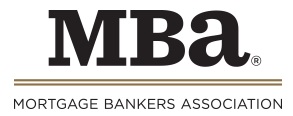Hurricanes Drive Up 60-Day and 90-Day Delinquencies
WASHINGTON, D.C. (February 9, 2018) – (RealEstateRama) — The delinquency rate for mortgage loans on one-to-four-unit residential properties increased to a seasonally adjusted rate of 5.17 percent of all loans outstanding at the end of the fourth quarter of 2017.
The delinquency rate was up 29 basis points from the previous quarter, and was 37 basis points higher than one year ago, according to the Mortgage Bankers Association’s (MBA) National Delinquency Survey. The percentage of loans on which foreclosure actions were started during the fourth quarter was 0.25 percent, unchanged from the previous quarter, and three basis points lower than one year ago. Mortgage delinquencies increased across all loan types – FHA, VA and conventional – on a seasonally-adjusted basis.
“The 30-day delinquency rate actually dropped by 15 basis points in the fourth quarter of 2017, as homeowners affected by Hurricanes Harvey, Irma and Maria either became current on their payments or moved to later stages of delinquency,” according to Marina Walsh, MBA’s Vice President of Industry Analysis. “However, while the earliest-stage delinquency rate dropped, the 60-day and 90-day delinquency rates did increase in the fourth quarter of 2017. Despite the hurricanes and these quarter-over-quarter results, most states are seeing overall mortgage delinquency rates at lower levels than a year ago.”
“The FHA overall delinquency rate in the fourth quarter of 2017 is higher compared to the fourth quarter of 2016 in all but three states. FHA borrowers appear to be impacted not only by the storms but other factors that could be stretching their ability to make payments,” Walsh continued. “Regardless of the hurricanes, an increase in delinquencies – particularly FHA delinquencies – off historic lows is not particularly surprising given the seasoning of the loan portfolio, expected higher interest rates, declining average credit scores on new FHA endorsements since 2014 and rising debt-to-income ratios. Mitigating factors include low unemployment and increasing home equity levels that provide homeowners with more options to cure a potential default.”
“Storm-related foreclosure moratoria continue to play a large factor in keeping foreclosure starts at bay, as the fourth quarter saw little movement in either foreclosure starts, or foreclosure inventory. As forbearance periods expire, an increase in the percent of loans in foreclosure is likely. We anticipate it will be several more quarters before the effects of the September hurricanes on the survey results dissipate, especially given extended forbearance periods.”
Key findings of MBA’s Quarterly National Delinquency Survey include:
- The delinquency rate includes loans that are at least one payment past due but does not include loans in the process of foreclosure. The percentage of loans in the foreclosure process at the end of the fourth quarter was 1.19 percent, down 4 basis points from the previous quarter and 34 basis points lower than one year ago.
- The serious delinquency rate, the percentage of loans that are 90 days or more past due or in the process of foreclosure, was 2.91 percent in the fourth quarter, up 39 basis points from the previous quarter, but still 22 basis points lower than one year ago. The entire increase in the serious delinquency rate is attributed to an increase in the percentage of loans that are 90 days or more past due.
- Mortgage delinquencies increased across all loan types – FHA, VA and conventional – on a seasonally-adjusted basis. The rise in delinquencies from the third to fourth quarter of 2017 are primarily tied to 90+ day delinquencies for all loan types, but particularly FHA loans. Compared to the third quarter of 2017, the 90+ day delinquency rate on FHA loans rose by 75 basis points, versus 29 basis points for VA loans and 27 basis points for conventional loans.”
- For hurricane-impacted states, Texas appears to be further along on a path towards recovery. The non-seasonally-adjusted overall mortgage delinquency rate in Texas on all loans dropped by 5 basis points to 7.33 percent in the fourth quarter. Meanwhile, In Florida, the non-seasonally-adjusted overall mortgage delinquency rate on all loans rose 187 basis points to 8.89 percent in the fourth quarter.
- PLEASE NOTE: while forbearance is in place for many borrowers affected by these storms, MBA’s survey asks servicers to report these loans as delinquent if the payment was not made based on the original terms of the mortgage regardless of any forbearance plans in place.
PLEASE NOTE: If you are a member of the media and would like to view the report please email Ali Ahmad at "> or call (202)557-2727. If you are a member of the media would like access to a specific state’s statistics, email ">
or call (202)557-2727. If you are not a member of the media and would like to purchase the survey, please visit www.mba.org/NDS or e-mail">
.
© 2018 Mortgage Bankers Association (MBA).
All rights reserved, except as explicitly granted. Data are from a proprietary paid subscription service of MBA and are provided to the media as a courtesy, solely for use as background reference. No part of the data may be reproduced, stored in a retrieval system, transmitted or redistributed in any form or by any means, including electronic, mechanical, photocopying, recording or otherwise. Permission is granted to news media to reproduce limited data in text articles.
Data may not be reproduced in tabular or graphical form without MBA’s prior written consent. The above data were obtained in cooperation with the Mortgage Bankers Association (MBA), which produces the National Delinquency Survey (NDS). The NDS, which has been conducted since 1953, covers 39 million loans on one- to four- unit residential properties. Loans surveyed were reported by over 100 lenders, including mortgage bank, commercial banks, and thrifts.
CONTACT
Ali Ahmad
(202) 557- 2727


